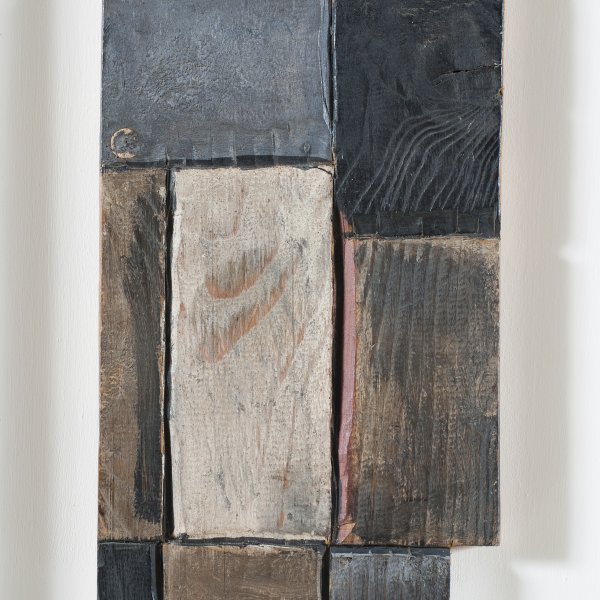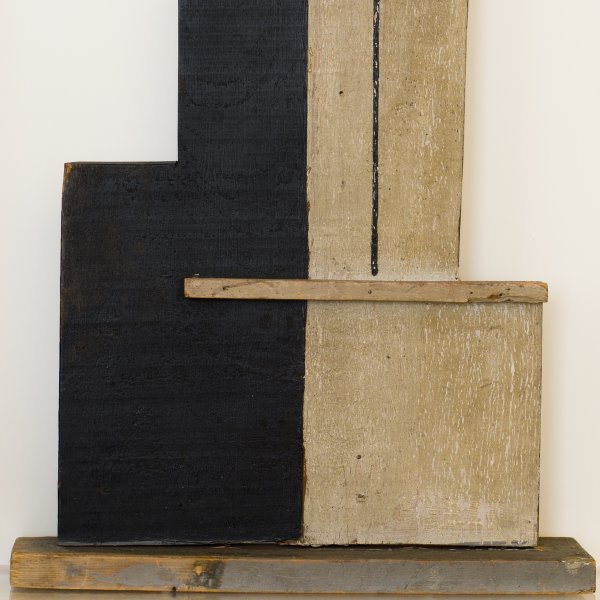Joaquín Torres-García
Painter, muralist, illustrator, sculptor, theorist and teacher, Joaquín Torres-García was born on 28 July 1874 in Uruguay where he spent his childhood and adolescence before moving to Spain in 1891. His family resided temporarily in Mataró and shortly afterwards settled in Barcelona where Joaquín registered both at the Academia de Bellas Artes and at the Academia Baixas. His early training was held in the traditional manner of Neoclassical studies which probably spurred him to abandon his academic apprenticeship in search of a more autodidact experience. From 1893 he independently devoted himself to a personal artistic quest often reinvigorated by the debates engaged in with Pijoan, Zulueta and Marquina at the Cercle de Sant Lluc and from 1897 with the members of the bohemian café Els Quatre Gats. Highly influenced by the graphic works of Toulouse-Lautrec that he had observed during the 1896 exhibition at the Sala Parés (Barcelona), Torres-García began to contribute as an illustrator to a number of books and periodicals, including Revista popular, Barcelona Comica and Jacinto Benavente's La Vida Literaria. In 1897 the artist exhibited a few drawings at the Vanguardia gallery and in 1901 a series of romantic landscapes, which he had executed for Utrillo's magazine: Pèl i Ploma, were presented at the Parisian Salon. At the turn of the century he had become a talented muralist and painter as emphasised by Eugeni d'Ors in his 1905 article published in El Poble Català . The flourishing artistic milieu that distinguished Barcelona and its peculiar Modernism led Torres-García to collaborate with Antoni Gaudí in the Cathedral of Palma de Mallorca and in the Sagrada Familia for the execution of a series of stained glasses (1903-1904). In 1910, while he was working on two major mural panels for the Exposition Universelle in Brussels, Joaquín Torres-García admired for the first time the monumental classicism of Pierre Puvis de Chavannes. The following year he was defined by the critics as one of the most significant members of Noucentisme on the occasion of the VI Exposició d'Art de Barcelona. In 1912 the artist was commissioned the frescoes for the decoration of the Saló Sant Jordi in the Palau de la Generalitat, whose execution sparked numerous debates among the critics. Retired in Tarrassa, Torres-García created the Escola de Decoració (Tarrassa) where he taught and published Notes on Art in 1913 followed by Di legs in 1915. On a more personal artistic base he concentrated on executing paintings that, on account of their accentuated geometrical organisation, foreshadowed his mature Constructivist style. Meanwhile, the exhibitions of his works progressively increased both in Spain and abroad. The artist and his family moved to New York in 1920 where he temporarily designed toys. Back in Europe, Torres-García met Piet Mondrian in Paris in 1928 and founded the group Cercle et Carré that he nevertheless left few years later. In 1934 the artist decided to return to Uruguay where he spent the rest of his life introducing the European avant-garde and developing his Constructive Universalism through the founding of the Asociación de Arte Constructivo and of the Taller Torres-García. Around the same time he executed the Cosmic Monument (1938, Montevideo) and published his most influential theorist work in 1944: Universalismo Constructivo. Joaquín Torres-García died in Montevideo on 8 August 1949.
Dominique Lora




